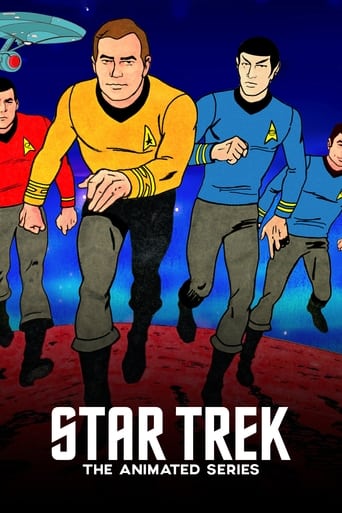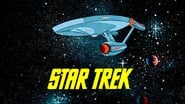rgcustomer
I'd like to see ST:TAS remade or rebooted.I think some of the first-season episodes (by no means all of them) were written pretty well, and you could attribute any problems with the story or dialog to the ~20-minute length of the episodes. If they were given ~30 minutes that a pay-TV network could provide, problems like that would be solvable. I think Star Trek fans deserve a look at these stories, done right, and I think there would be a lot of interest, if it was treated with respect rather than as disposable children's TV series.In ST:TAS, the voice acting was awful, even though much of the original cast was involved. Doohan's aliens were laughably weak, and Nichols was unable to disguise her voice for her multiple characters. But worst, the idea of all the actors in a scene not being together in the same place at the same time is just toxic to a series like Star Trek, where familiar characters are supposed to have personalities, interactions, and reactions.The music was also awful. A lot of times it was off to the races, trying to stimulate an excitement that the story and animation just weren't delivering. And it wasn't even Star Trek music, really. It sounded very generic to me. If it wasn't generic at the beginning, it certainly seemed that way by the end of season 2. I was glad there wasn't any more to endure. Duh-duh-duh-duh-duh-duh-duh-duh-duh-duuuuuuh makes me want to stab my ears.The animation? Awful. I'm just not going to say any more than that. Awful.What I HAVE liked, even though the look is very similar to TAS, are the two animated fan shorts Starship Farragut: The Animated Episodes. Because there are only two, I don't call it a series. But their execution based on TAS, is actually better than TAS, and it's just a fan project. Any remake or reboot of TAS would have to be superior to these.
Steve Nyland (Squonkamatic)
I'd go to bat and say that STAR TREK: TAS is perhaps the greatest single animated Saturday morning TV show ever conceived. The Bugs Bunny, Scooby-Doo and Superfriends phenomena were series that spanned several seasons and changes to format. STAR TREK: TAS was only a season and a half, and while popular never really resonated on a cultural level, though I am willing to bet that most everyone who recalls seeing it during the initial run was an instant fan. I grew up in a household where television viewing was very strictly regulated until our teen years and Saturday morning TV was one of the few areas where as kids we had carte blanche to choose what we watched, so for whatever its worth I probably saw more of this series at the time than the original series episodes, and it left an impression.I re-discovered the show as an adult on home video and was fascinated to find that, as another contributor points out, it's a very mixed bag. Some of it is in it's own way at least as good as the original series ("Beyond the Farthest Star", "Yesteryear"), some of it tries new things out that sort of fell flat due to the limited scope of a 24 minute cartoon show ("Magicks of Megus Two", "The Infinite Vulcan") where some triumphed wonderfully using that cartoon element to advantage ("The Pirates of Orion", "Jihad"), some of it is downright silly or even beneath the franchise's standards ("Mudd's Passion", "Albatross"), some of it feels like warmed up leftovers ("More Tribbles, More Troubles", "Once Upon A Planet"), some of it anticipated events yet to come in the Star Trek universe ("One of Our Planets Is Missing", "The Practical Joker") and some of it is just plain weird enough to transcend the whole concept of Star Trek itself and almost exist as a "new" show ("The Slaver Weapon", "The Ambergris Element") that had it's own unique identity.Leave it as safe in saying that fans of the original adventures with Kirk, Spock, McCoy and Scotty will be delighted, not just because the original actors reprise their roles for the cartoon characters, but because unlike some of the behind the scenes antics from the live action series the whole cast gets a fair shake this time ... Legends about Bill Shatner's line cutting and scene stealing are notorious amongst those in the know about how the original show was made, and the animated series does a good job of cutting everyone down to size -- though Shatner still overacts shamelessly as a cartoon character, which is not an easy feat. Somehow, he managed to, and the animated series is a great extension of the Captain Kirk mystique of applied heavy-handedness.Some of it is really impressive for a 1970s cartoon effort: The likenesses of the beloved bridge crew is captured without a flaw, and in spite of some stiffness in delivery (the cast was often reciting their lines from different studio locations, in one instance Shatner even memorably recording his lines in the restroom of a studio while on a tour with an off-Broadway play) there is still the same feeling of unit cohesion & family like closeness amongst the cast. Some of it is still very very good Star Trek, and while there were a few dead ends as far as innovations for the franchise -- why were the life support belts dropped? they made perfect sense -- some of it stuck, most notably "The Practical Joker"'s rec room, which became the venerated Holodeck. And it was nice to see some genuinely alien Federation personnel, specifically the 3 armed orange Lt. Arex, sitting in for Chekov (who got to write an episode as compensation).But it should also nearly go without saying that non-converts of the original series and perhaps skeptics of all walks of life may find the presentation awkward, hackneyed and even tedious. Some of the animation techniques have not aged well when considering the young skulls filled with mush who have been spoiled by decades of Japanese anime, computer graphics, and endless toy commercials masquerading as entertainments for children. There is a decidedly low-tech approach to how the show was constructed that will appeal to the hand drawn animation geek as much as it turns off those who prefer a glossier edge. It's certainly not a show for everyone, but once it gets under your skin it can be at least as enjoyable as the original live action series, and indeed a bit more esoteric. This is advanced Star Trek viewing nowadays, a specialized function of the franchise that had a very limited run, wasn't seen by as many people, and remains somewhat elusive for most mainstream fans of the show to key into.I absolutely adore the series, not only was it an important part of my youth but as an extension of the original series that deserves to be brought back into the canon of the franchise. To paraphrase writer David Gerrold, if Gene Roddenberry decided to make it and got paid for the work then it should be an official part of the universe, even if certain aspects of it didn't work out. It's amusing to see how Star Trek was translated to a lower common denominator and expanded at the same time, with downright bizarre alien settings, some ingenious alien races that could only exist as animations, the hyper funky & just different enough to avoid a lawsuit musical score, and the animated Enterprise which seems to be perpetually sliding sideways through space as a rotoscoped cartoon ship.Available on a magnificent DVD box set now featuring the entire 22 episode run with some fascinating commentary options and a making of special, I encourage anyone with an appreciation for Star Trek or weird 1970s Saturday morning programming to check it out, it's a very special show that deserves to be seen again.8/10
Reginald D. Garrard
The original "Star Trek" was never a ratings powerhouse, but it had a devoted fan base, thus encouraging Paramount to try a Saturday morning spin-off. The series, though crudely drawn in spots, benefited from superb writing, the vocal talents of most of the original cast, and a score that had its exciting moments.Some of the best episodes were "The Slaver Weapon," an installment that featured Uhura and Sulu in prominent roles (much more than the original series ever did); "The Jihad" (In order to avert a galactic conflict, Kirk leads a team of aliens to find a sacred item); "How Sharper Than a Serpent's Tongue" (The Enterprise is held captive by a space-faring serpent-creature that served as a "god" to primitive Earth peoples); the Peabody-winning "Yesteryear," wherein Spock goes back in time to correct an inconsistency; and the amusing "More Tribbles, More Tribbles," a sequel to the classic original episode.Not only did all but one of the original cast members supply their voices but guest stars Roger C. Carmel ("Harry Mudd"), Stanley Adams ("Cyrano Jones") and Majel Barrett ("Nurse Chapel") return in their respective roles.









